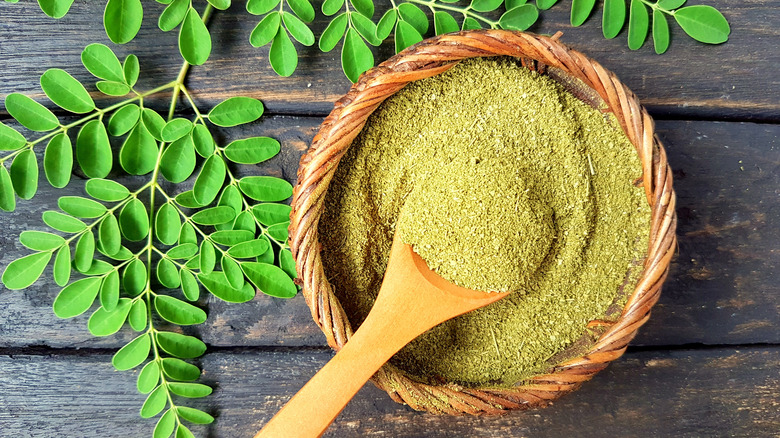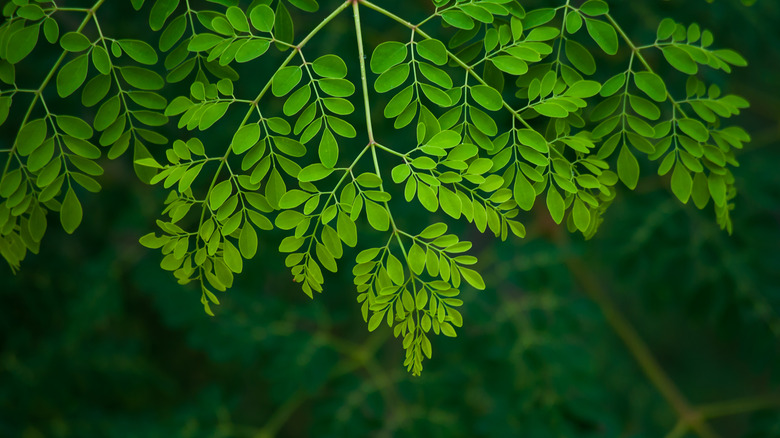The Simple Way To Replicate Fresh Moringa In The US
Moringa is loaded with health-supporting antioxidants, minerals, and vitamins, rightfully earning its reputation as a "miracle tree" (per WebMD). To give you an idea, moringa leaves pack seven times the amount of vitamin C found in an orange and 15 times more than the amount of potassium found in a banana, (via WebMD).
Take it Easy Chef remembers a childhood with grandparents preparing the leaves from the tree and using the ingredient in stir fries and curries or cooking the greens with shallots, coconut, and dry chilies. In the United States, moringa is most commonly found as a powdered ingredient, for the crushed leaves last longer and can easily be added to drinks like tea or coffee, per Thrillist. But even if you can't find fresh leaves to cook in dishes and bring home to your kitchen, the powdered form can just as easily add a healthy kick to soups, sides, and main dishes — because sometimes, you have to work with what you have.
Get creative in the kitchen
Kuli Kuli notes that moringa trees can be grown from seeds or cuttings, but the plant is best suited for warmer climates found in Texas, California, and Florida — and it requires plenty of water to grow. If kept in a pot, the tree can be moved outside during the warmer summer months and moved inside during the cooler seasons, for the plants thrive in temperatures ranging from 77 to 95 degrees Fahrenheit and at altitudes lower than 2,000 feet above sea level.
Even if you can't get your hands on any fresh produce, you can still mimic the taste and texture of cooked moringa using the powdered form. To get a similar flavor as the actual leaves cooked in other parts of the world, add moringa powder to whatever leafy produce you can find at the store — think spinach and kale — or incorporate the powder into curries or stews, suggests Thrillist. For a health-boosting dish, try our moringa soup recipe with turmeric, fennel, and taro roots.

